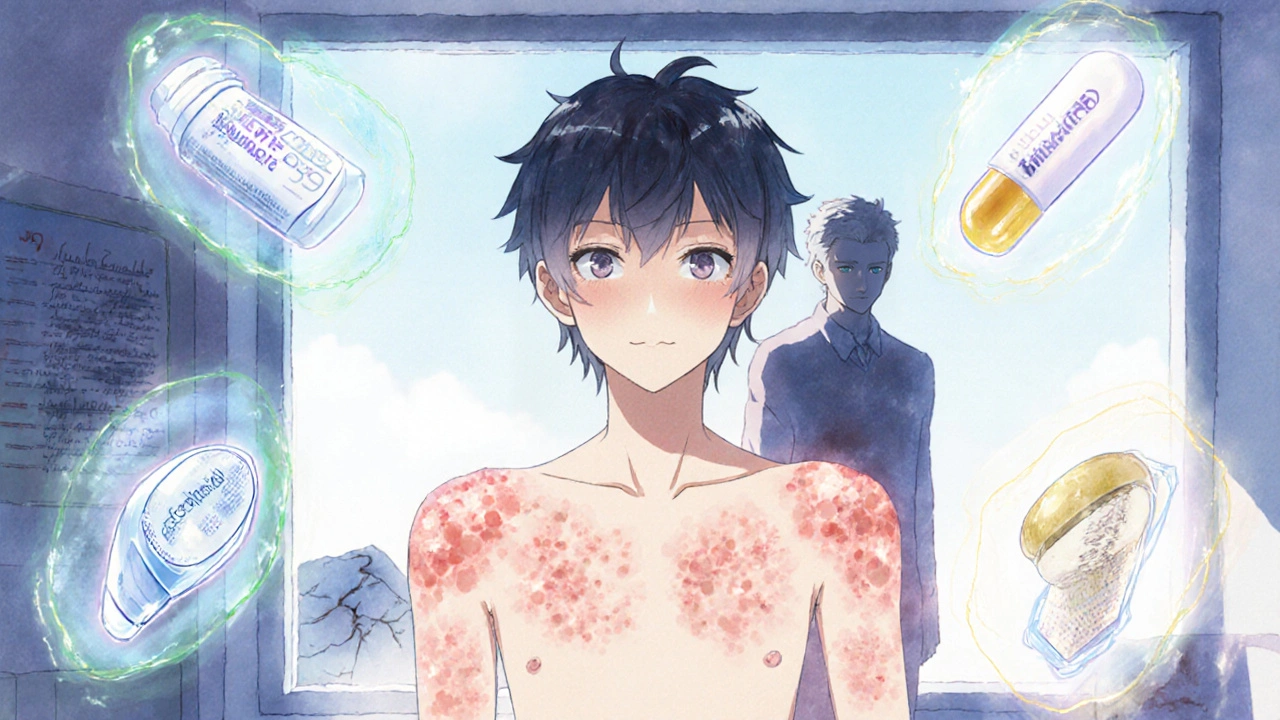Dapsone treats skin conditions like dermatitis herpetiformis and leprosy, but side effects like anemia and nerve damage are common. Learn about safer, effective alternatives including colchicine, doxycycline, and rituximab.
Read MoreLeprosy Treatment: Modern Methods, Drugs, and What Works Today
When it comes to leprosy treatment, a curable infectious disease caused by Mycobacterium leprae that mainly affects the skin and nerves. Also known as Hansen’s disease, it’s no longer the feared condition it once was—thanks to effective, WHO-recommended drug combinations that can fully cure it if caught early. The days of isolation and stigma are fading, replaced by simple, affordable, and highly successful regimens that stop the bacteria in its tracks.
Modern multidrug therapy, a standardized combination of antibiotics designed to prevent drug resistance and ensure complete eradication of the bacteria is the gold standard. It typically includes three drugs: dapsone, an antibacterial that has been used for decades to kill Mycobacterium leprae, rifampicin, a powerful antibiotic that rapidly reduces bacterial load, and clofazimine, a red-colored drug that helps reduce inflammation and skin lesions. These aren’t experimental—they’re proven, used worldwide, and often given for free through public health programs. Treatment lasts 6 to 12 months, depending on the type of leprosy, and most people see symptoms improve within weeks.
What’s often overlooked is that treatment doesn’t just stop the infection—it prevents permanent damage. Nerve damage from untreated leprosy can lead to loss of sensation, muscle weakness, or even loss of fingers or toes. That’s why catching it early is everything. If you notice numb patches on your skin, unexplained sores, or loss of hair in certain areas, get checked. No need to panic—this isn’t a death sentence. It’s a medical condition with a clear, reliable solution.
Some people still think leprosy is rare, but it’s not gone. It still shows up in places like India, Brazil, and Indonesia, and occasionally in the U.S. among travelers or immigrants. The key isn’t fear—it’s awareness. And the best part? You don’t need fancy hospitals or expensive drugs. The WHO supplies the full treatment pack for free in high-burden areas. Even in low-resource settings, recovery is normal, not the exception.
There’s no magic cure, no herbal fix, and no need for alternative therapies if you’re on the right antibiotics. Skip the myths. Stick to the science. The drugs work. They’ve worked for decades. And they’ll keep working—if you take them as directed, without stopping early because you feel better. That’s when resistance starts, and that’s when things get harder.
Below, you’ll find real-world guides on managing side effects, understanding drug interactions, and navigating long-term recovery—everything you need to know about how leprosy treatment actually works today, from diagnosis to full healing.
